THERE are roles for rolls of cheap masking tape. However, using cheap rolls for roles better suited to expensive rolls won’t leave you rolling in it — money, that is.
This article was first published in the March 2013 issue of Street Machine
Masking tape is not terribly expensive. A roll of good quality two-inch masking tape costs around $5. Buying a cheaper version in the same width will save you $2 up front but possibly cost hours of extra time in subsequent cleaning or polishing.
Well-known show and race car painter Trevor Davis says good quality tape has to both stick firmly yet release easily without leaving a residue — seemingly contradictory qualities.
Poor quality tape, he explains, is a particular problem with multi-colour paint jobs because “the last thing you want to be doing is peeling stubborn adhesive off soft basecoat with no clear on it”.
The longer masking tape stays in place, the more likely it is to leave a residue when removed. This is more of an issue for amateurs, as they’re likely to leave the tape on longer than a paint shop would.
Really good masking tape can be left on for weeks, yet still peel off without leaving any residue.
Trevor also says that people don’t look after their masking tape. Quality tape is packaged with plastic protector/separator rings that keep the edges of the roll clean and free of debris. The protector obviously comes off when the roll is used but the need to keep the edges clean remains. Putting the tape down on its side in dirt immediately ruins the edge and makes it useless for anything but secondary tasks that you’d use cheap tape for. That’s what’s happened to the bottom roll (main photo, top).
The orange Nitto tape is an extremely good quality tape with a very thin adhesive layer, which makes for a really good edge. The top roll is general crepe masking tape. It’s the crepe texture that allows masking tape to stretch a little. Carelessly tossing a roll of tape down may damage the edge and cause it to tear when you’re trying to apply it. Very frustrating.
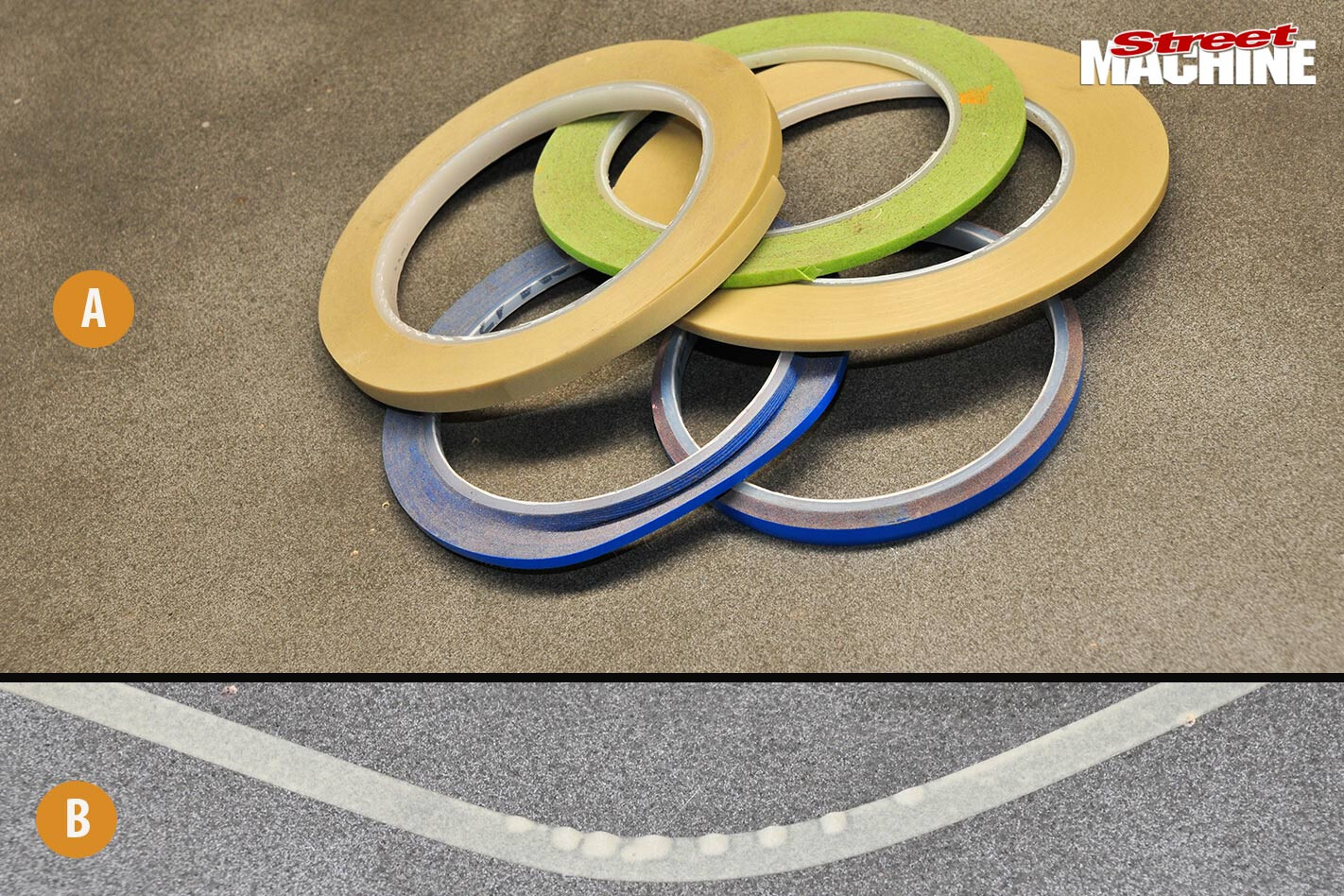 Even good quality tapes don’t do everything perfectly; it’s a matter of the right tape for the right job. 3M’s 3mm and 6mm Fine Line (A, above) have really good edges but don’t go around corners particularly well (B, above).
Even good quality tapes don’t do everything perfectly; it’s a matter of the right tape for the right job. 3M’s 3mm and 6mm Fine Line (A, above) have really good edges but don’t go around corners particularly well (B, above).
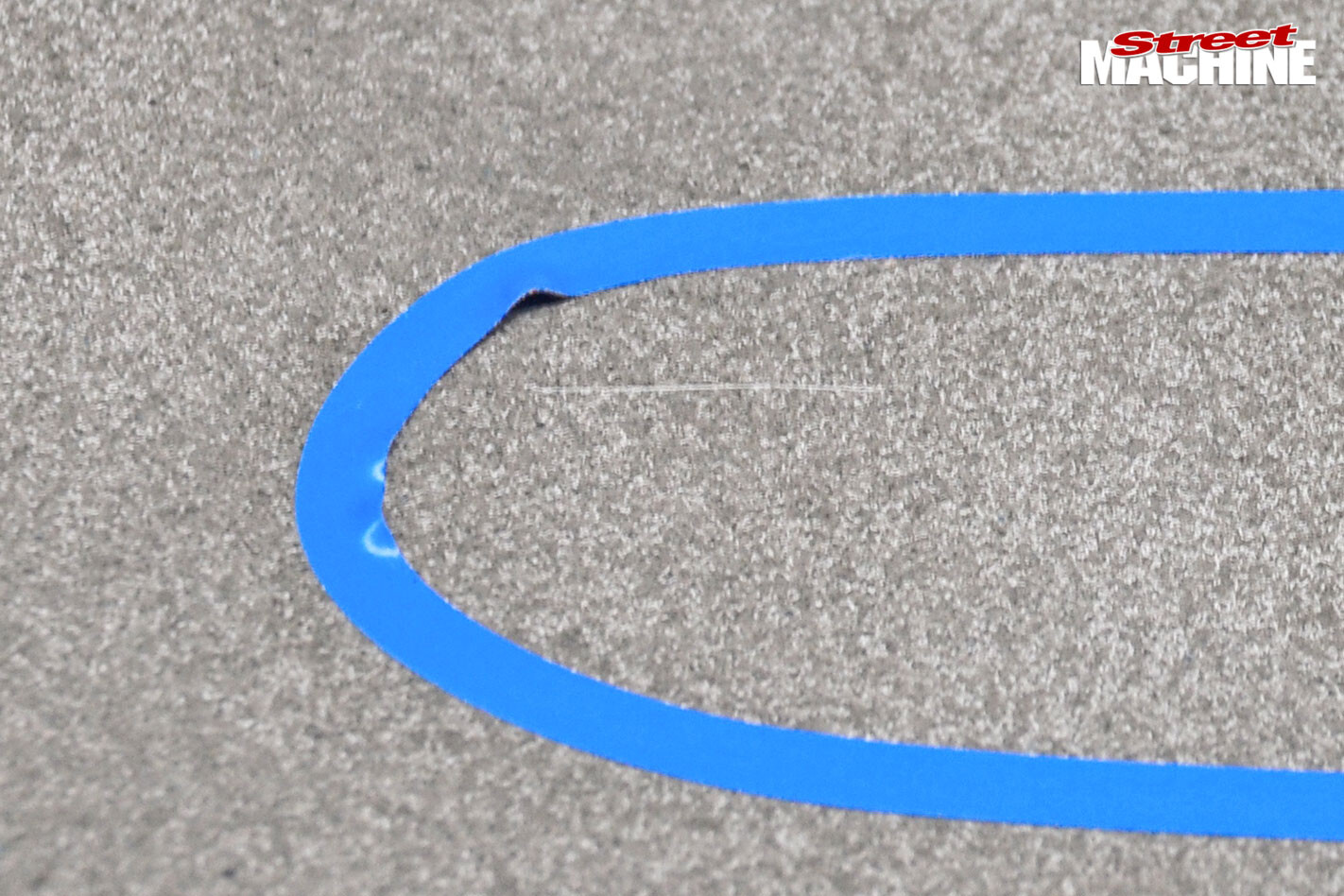 The blue tape is 3M Vinyl Tape 471+. It’s very flexible and can hold a pretty tight radius. It also stretches easily, particularly over long runs, which means it can lift after initial application if it’s been stretched too far. Even with extremely flexible tape like this, some tight turns are just asking too much and the tape can start to lift (above). Note that the wider the tape is, the less it will curve. Trevor says the green 3M 218 Scotch Fine Line is a good all-rounder. It holds a curve quite well with a decent minimum radius and also has a good edge.
The blue tape is 3M Vinyl Tape 471+. It’s very flexible and can hold a pretty tight radius. It also stretches easily, particularly over long runs, which means it can lift after initial application if it’s been stretched too far. Even with extremely flexible tape like this, some tight turns are just asking too much and the tape can start to lift (above). Note that the wider the tape is, the less it will curve. Trevor says the green 3M 218 Scotch Fine Line is a good all-rounder. It holds a curve quite well with a decent minimum radius and also has a good edge.
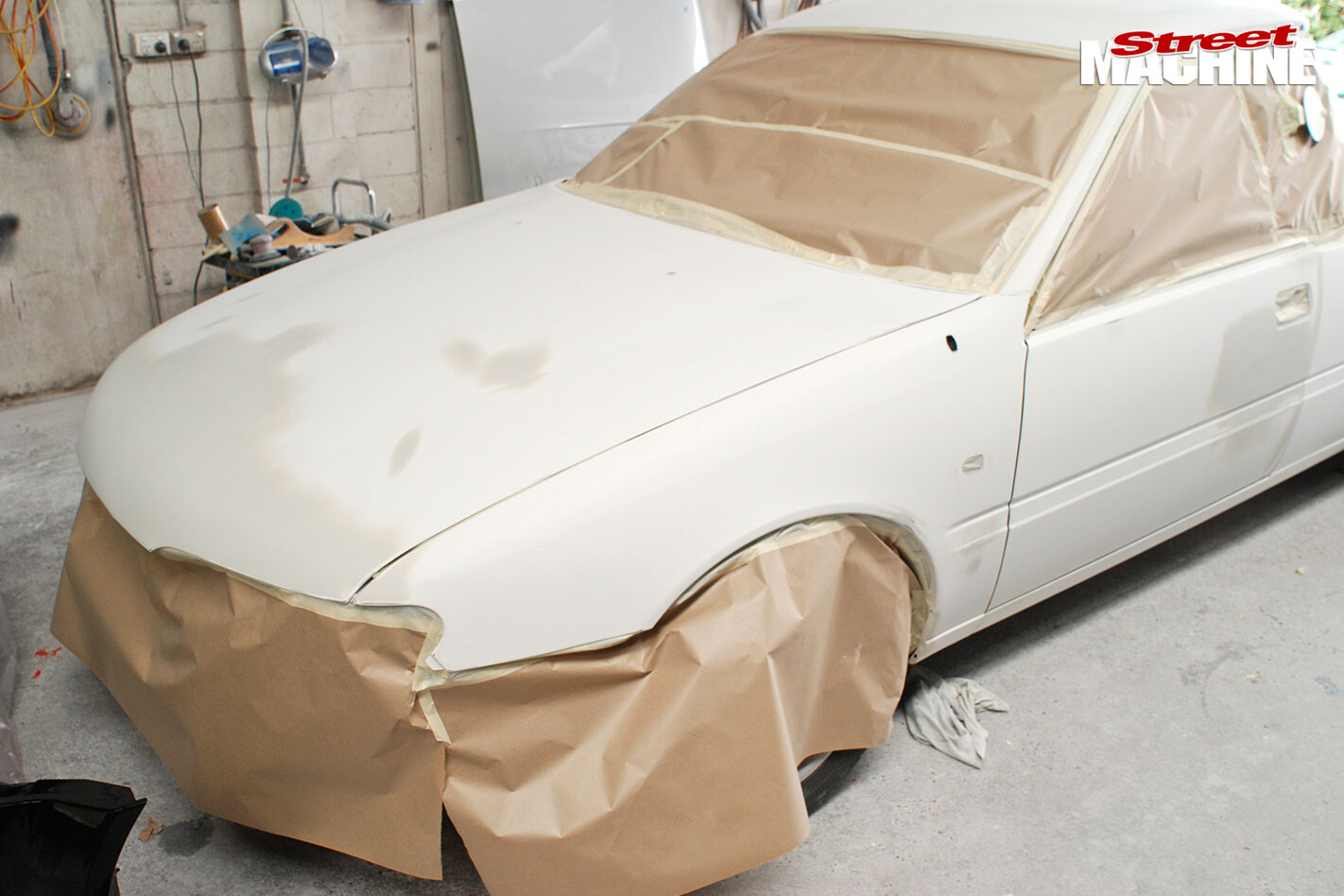 Whether it’s a quick respray (above) or a Trevor Davis-style professional job, masking off is about preventing paint from landing where it isn’t wanted.
Whether it’s a quick respray (above) or a Trevor Davis-style professional job, masking off is about preventing paint from landing where it isn’t wanted.
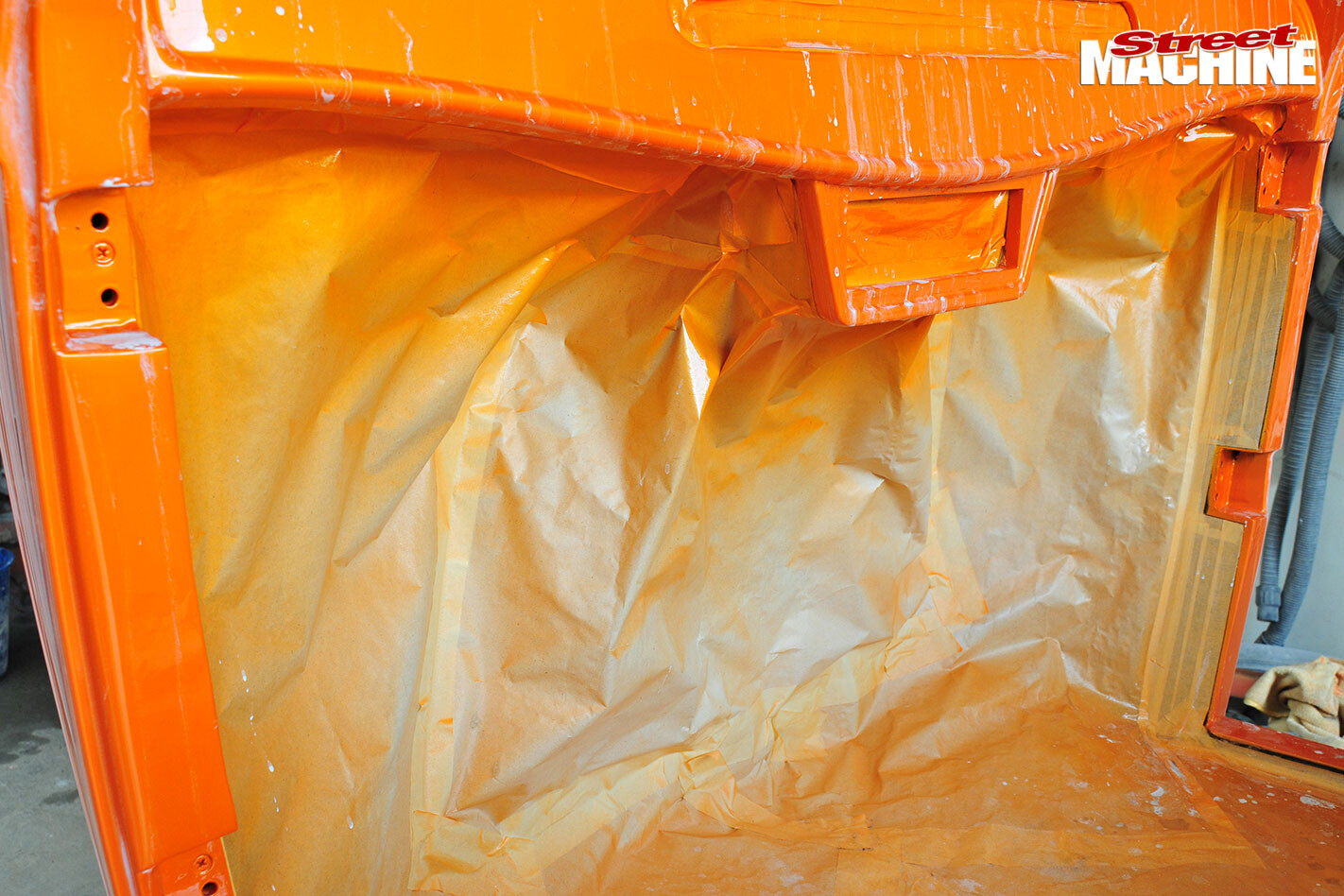 Trevor also points out that it’s a good idea to mask off areas that aren’t being painted (above) to prevent debris from being blown onto the painted surface; it only takes one speck of dirt to create a problem.
Trevor also points out that it’s a good idea to mask off areas that aren’t being painted (above) to prevent debris from being blown onto the painted surface; it only takes one speck of dirt to create a problem.
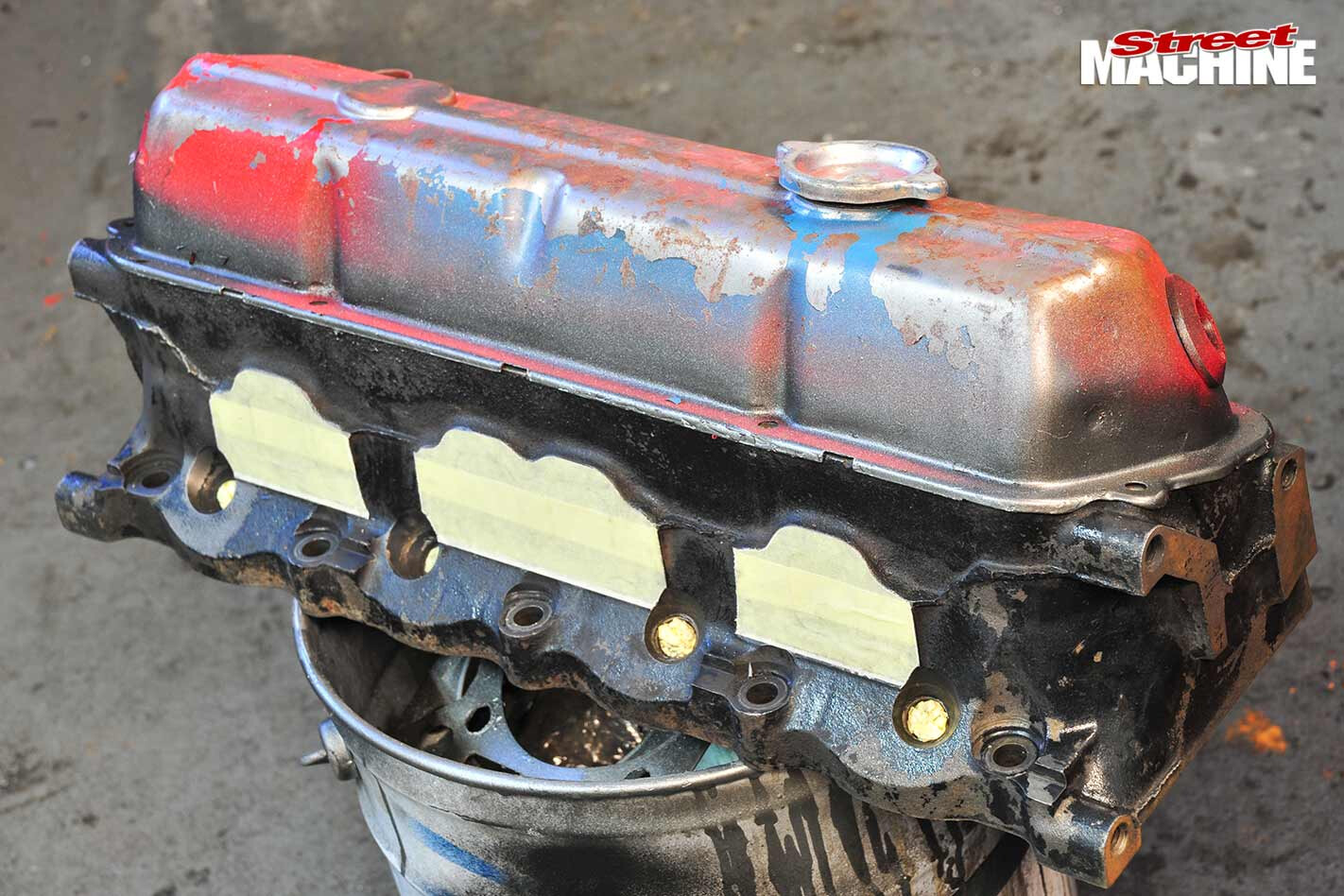 Engines are another common target for the gun or a spray can. The main thing here is to ensure the surfaces are completely clean. Masking tape won’t stick to oily surfaces very well, if at all. Pressing tape onto a metal surface that has a sharp edge using a hard edge will cut the tape to the shape of the part (above) quite neatly. Neat!
Engines are another common target for the gun or a spray can. The main thing here is to ensure the surfaces are completely clean. Masking tape won’t stick to oily surfaces very well, if at all. Pressing tape onto a metal surface that has a sharp edge using a hard edge will cut the tape to the shape of the part (above) quite neatly. Neat!
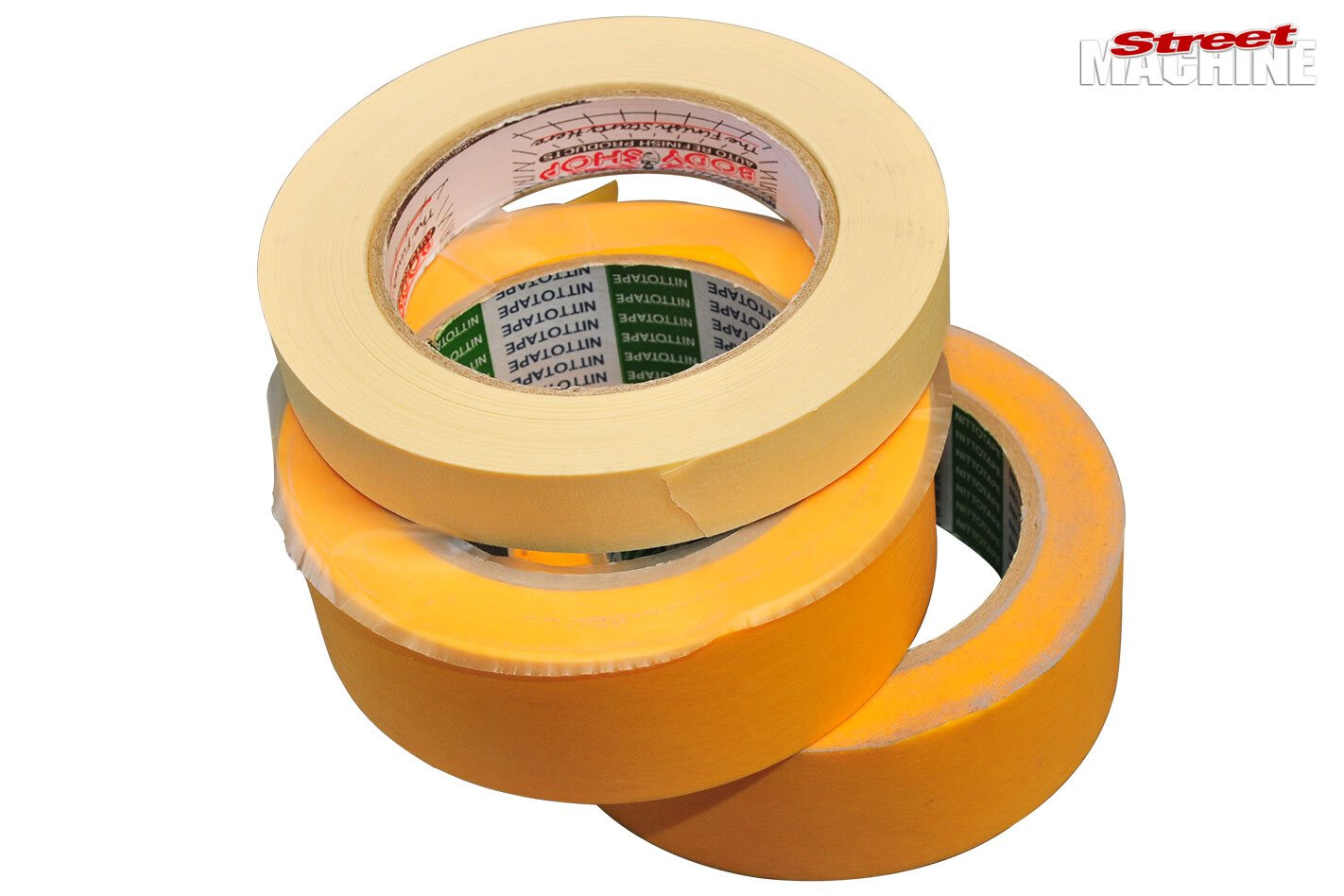
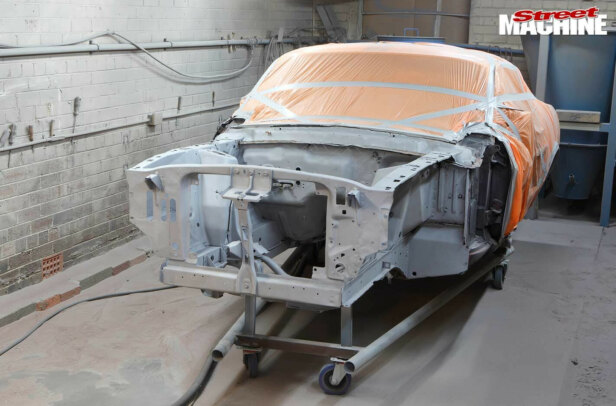


Comments